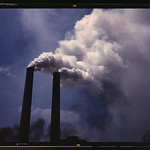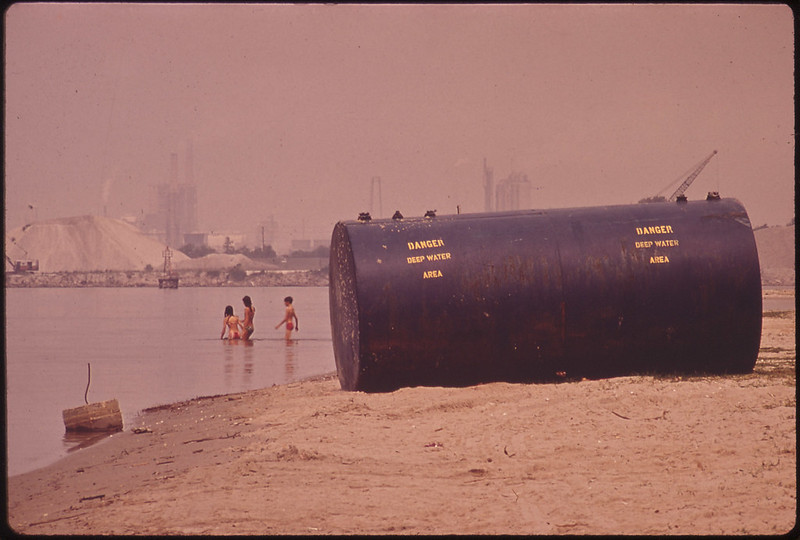In 2018, Donald Trump was planning to support building a new plant in Cancer Alley, which would cause an obscene amount of pollution, threatening the environment and the health of family members in the community. The purpose of the new plant was to

smokestack pouring smoke into the atmosphere (Photo by Masse)
create more jobs for Americans and the community around Cancer Alley. However, the people living in these communities rarely get those jobs, and the plants cause them even more harm. Another example of a political figure who does not think that climate change is an issue is Senator Bill Cassidy who served in the Louisiana state senate and the US House of Representatives. Cassidy stated, “Global temperatures have not risen in 15 years.”
Cancer Alley is an 85-mile stretch located along the Mississippi River that is lined with 150 oil refineries and petrochemical plants. These facilities make Cancer Alley the second largest producer of petrochemicals in the U.S., after Texas. There have been numerous reports linking a high number of cancer diagnoses in residents who live close to Cancer Alley. An article titled “An Analysis of Pollution and Community Advocacy in ‘Cancer Alley’” states, “There have not been many laws passed at the national level to ensure environmental justice for all communities.” Cancer Alley has been overlooked by policymakers and other communities which has resulted in an absence of laws to protect the community living around these factories. The revenue that is brought in from these factories is significant, and therefore, the damages are overlooked. In St James Parish, where Cancer Alley is located, the pollution is so high that in 2000 the Environmental Protection Agency (EPA) ranked St James Parish 90th in counties in the US with the highest amount of toxic release.
St. Gabriel, a riverfront community that makes up part of Cancer Alley, thought the new plants and industry would at least bring employment to their community. Willis, a St.Gabriel resident, said “We thought we’d get better jobs, but they brought their own people here.” An employment survey that was conducted in 1995 showed that in the city of St.Gabriel less than 9% of the full-time industry jobs were held by locals. In addition to hurting the community financially, these plants are causing major health risks for the citizens.
“across time and space, people have been treated unfairly just because of their race”
Two-thirds of St. Gabriel’s population is black. The new plants being built are near or in communities that EPA models show already have some of the worst air conditions in the country. Also, these predominantly Black communities are struggling with poverty, while neighboring white affluent neighboring parishes are left untouched. One predominantly white parish, Ascension Parish, is one of the most affluent communities in Louisiana and is not cluttered with chemical plants. The majority of chemical manufacturers tend to be built closer to largely black communities, such as St. Gabriel. Lower-income, largely Black populated areas are continuing to fall victim to the exploitation of their neighborhoods. With these new plants being constructed it is projected that the cancer-causing chemicals in the air will increase by 16% in the future.

Chemical pollution into the river (photo by U.S. National Archives)
Climate Change is a big issue that society tends to ignore, but the COVID pandemic has shown the world that we can make a change. Due to Coronavirus, people have been forced to stay inside and refrain from activities that create pollution, such as air and car travel, and as a result of COVID-19 and the decrease in travel, the carbon dioxide emission in 2020 fell by 6.4%. According to a poll conducted by Yale University, only 63 percent of Americans even believe that climate change and global warming is actually happening. According to the UN news website, greenhouse gas emissions are down and air quality has gone up as governments react to the COVID-19 pandemic. Before the COVID 19 pandemic Obama acknowledged climate change and took steps to combat it. Obama focused on the Clean Power Plan as one of many initiatives to help with climate change. The Clean Power Plan was put in place in 2005 to set standards to reduce carbon dioxide emission by 32 percent by the year 2030. As of 2019, The Trump administration did away with the Clean Power Plan, attempting to replace it with an inadequate substitution. Therefore this unlawful action is still being fought in court by the Environmental Defense Fund.
 NOLAbeings
Multimedia artist Claire Bangser created NOLAbeings as a portrait-based story project that marries...
NOLAbeings
Multimedia artist Claire Bangser created NOLAbeings as a portrait-based story project that marries...
 Data corner: Adobe Suite (create a PDF, social media graphic, presentation, edit a photo and video
Data corner is where you go to work with analytics and top tech skills. It takes on everything from PERL and SQL to Canva and Sprout Social.
Data corner: Adobe Suite (create a PDF, social media graphic, presentation, edit a photo and video
Data corner is where you go to work with analytics and top tech skills. It takes on everything from PERL and SQL to Canva and Sprout Social.
